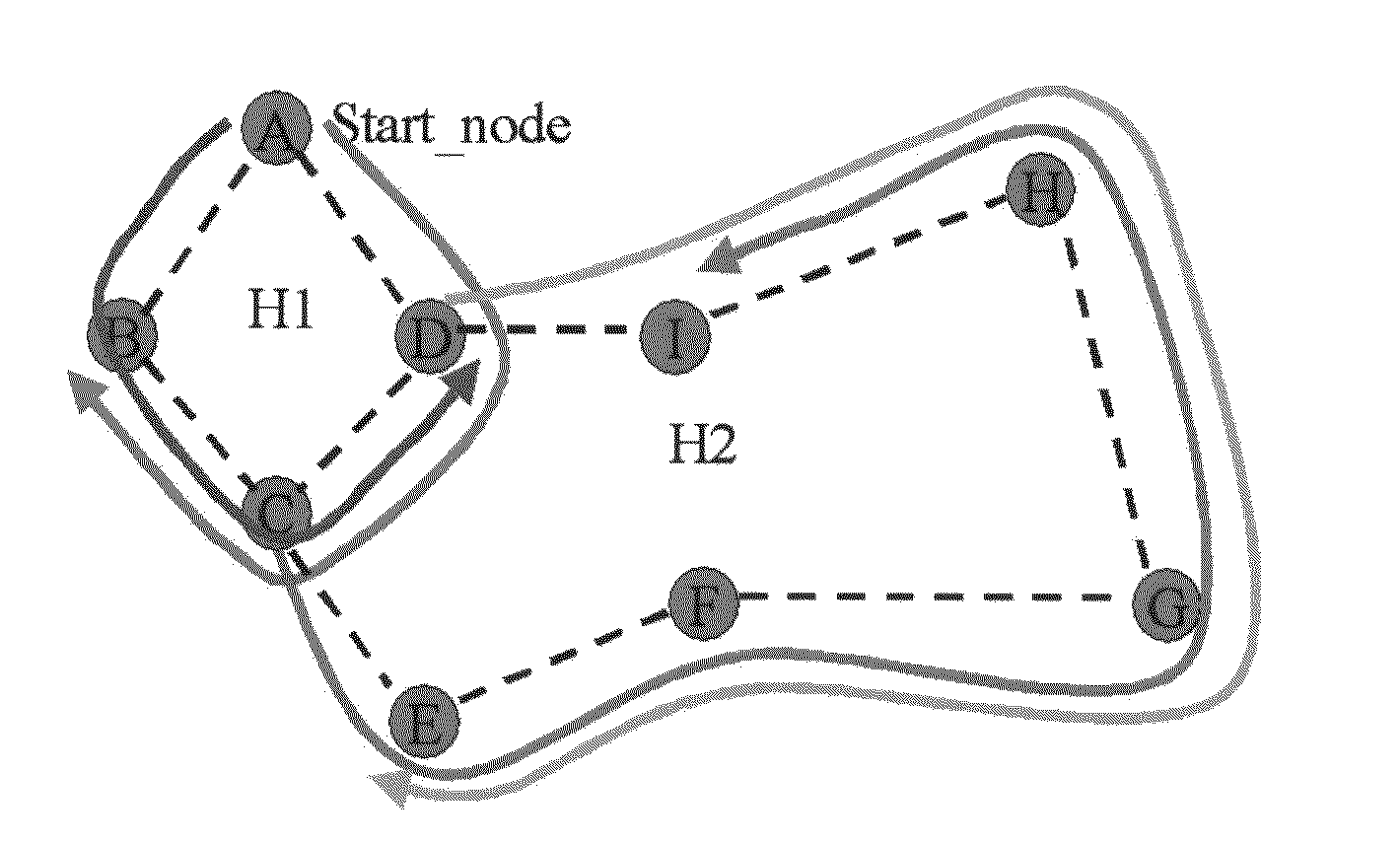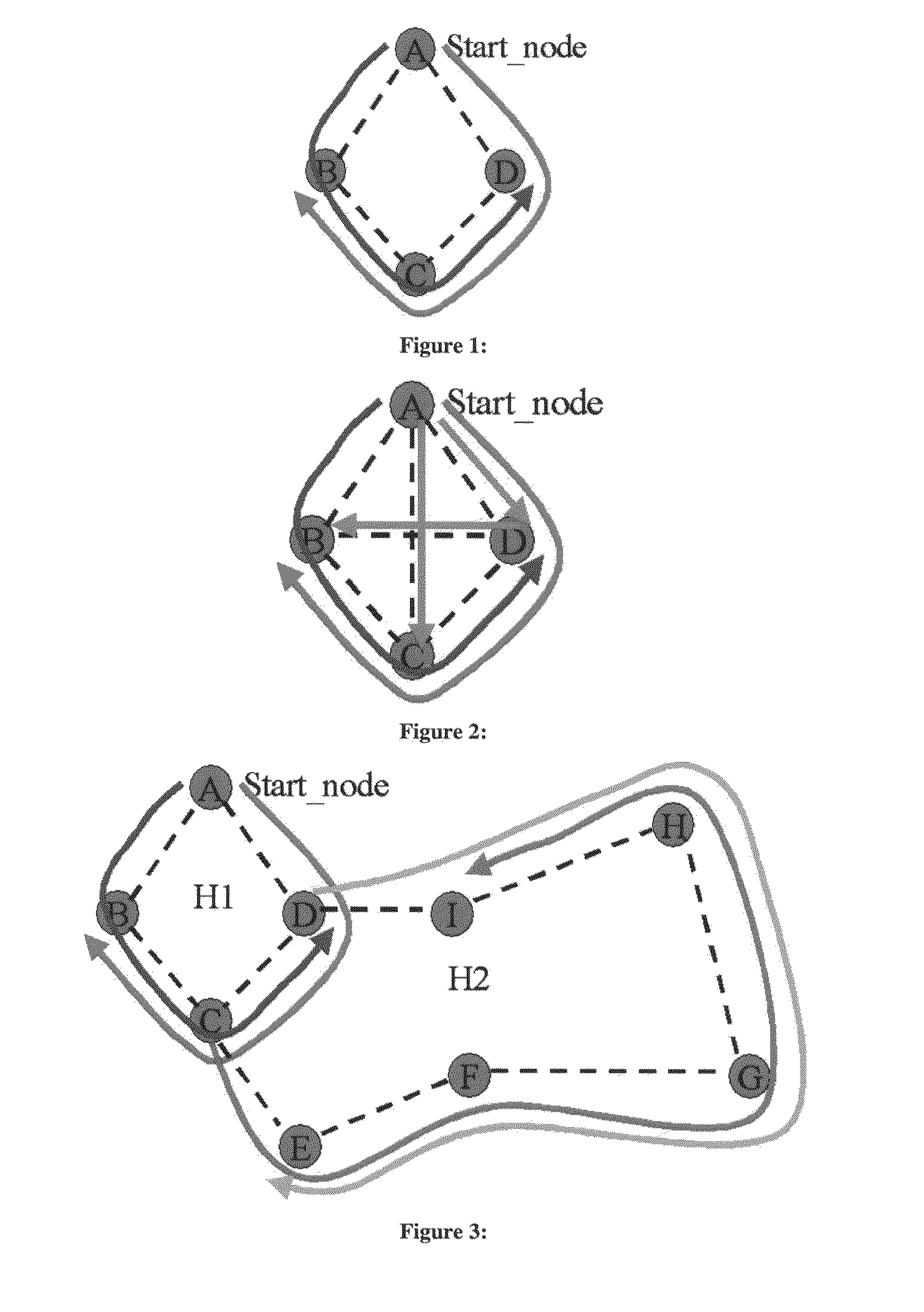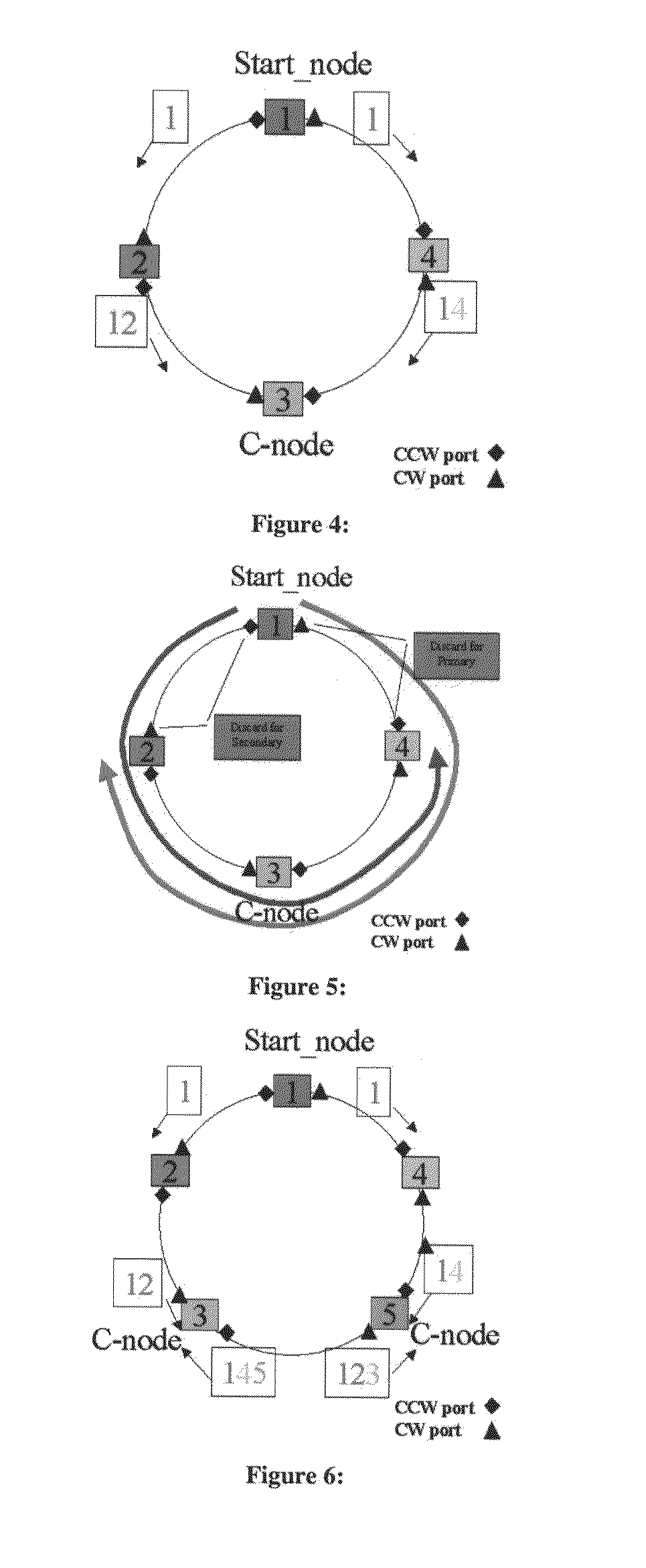Method to Develop Hierarchical Ring Based Tree for Unicast and/or Multicast Traffic
a hierarchical ring and multicast technology, applied in the direction of digital transmission, data switching by path configuration, electrical equipment, etc., can solve the problems of traffic engineering and quality of service, ethernet in its native mode suffers from scalability, protection and restoration, and inefficient sdh based transport networks
- Summary
- Abstract
- Description
- Claims
- Application Information
AI Technical Summary
Benefits of technology
Problems solved by technology
Method used
Image
Examples
case 1
[0240]Case 1: Two nodes only as shown in FIG. 18a. It is abstraction of ring. Node 1 is start node. Node 2 is C-node. All intermediate nodes and the connecting links between node 1 and 2 are abstracted as one logical link and are hence not shown in the figure. In this example we assume total delay between node 1 and 2 is same along both logical paths.[0241]The example is like LAG between node 1 and 2[0242]Hop delay is same[0243]Node 1 broadcasts CF[0244]Node 1 follows −>1, 2, 6, 12, 17, 18, 19, 15, 20 and 16 blocks mentioned in FIG. 15.[0245]Node 2 receives CF on two ports simultaneously and follows −>1, 2, 6,7, 8, 9, 10, 15, 11, and 16 blocks mentioned in FIG. 15.[0246]Node 2 converged and follows −>1, 2 and 16 always until fault occurs[0247]Node 1 receives returning CF with its node_ID and C-node_ID as node 2.[0248]Node 1 follows −>1, 2, 6, 7, 3, 4, 5, and 16[0249]Node 1 converged and follows −>1, 2 and 16 always until fault occurs
case 2
[0250]Case 2: Two nodes only as shown in FIG. 18b. It is abstraction of ring. Node 1 is start node and happens to be also a C-node. Node 2 is forwarding node. All intermediate nodes and the connecting links between node 1 and 2 are abstracted as one logical link and hence not shown in the figure. In this example we assume total delay between node 1 and 2 is different along the two logical paths.[0251]It is like LAG between node 1 and 2[0252]Hop delay is NOT same[0253]Red (Right) path is slower than Black (Left) path[0254]Node 1 broadcasts CF[0255]Node 1 follows −>1, 2, 6, 12, 17, 18, 19, 15, 20 and 16 blocks mentioned in FIG. 15.[0256]Node 2 forwards the first CF received from faster link towards the slower link; follows −>1, 2, 6, 12, 17, 18, 19, 15, 20, and 16 blocks mentioned in FIG. 15.[0257]Node 2 receives CF non-simultaneously through the slower link and follows −>1, 2, 6, 12, 13, 14, 9, 10, 15, 11 and 16 blocks mentioned in FIG. 15.[0258]Evidently, node 2 becomes a C-node. Ch...
case 3
[0269]Case 3: Two nodes and 3 links as shown in FIG. 18c. Node 1 is a start node. Node 2 is C-node. All intermediate nodes and the connecting links between node 1 and 2 are abstracted as one logical link and hence not shown in the figure. In this example we assume total delay between node 1 and 2 is same along all three logical paths.[0270]It is like triple-LAG between node 1 and 2[0271]It is tricky example because three CF are received at 2[0272]Hop delay is same[0273]Node 1 broadcasts CF[0274]Node 1 follows −>1, 2, 6, 12, 17, 18, 19, 15, 20 and 16[0275]Node 2 receives CF on three ports simultaneously and follows −>1, 2, 6,7, 8, 9, 10, 15, 11, 5 and 16[0276]Notice that first two CFs are used to start formation of Hierarchy. The third CF is then used in the notification process with value of node 2 in the field Pairing_Not_Req.[0277]Node 1 receives 2 returning CF and one Notification frame with Pairing_Not_Req value as 2.[0278]Node 1 follows on two returning CF−>1, 2, 6, 7, 3, 4, 5,...
PUM
 Login to View More
Login to View More Abstract
Description
Claims
Application Information
 Login to View More
Login to View More - R&D
- Intellectual Property
- Life Sciences
- Materials
- Tech Scout
- Unparalleled Data Quality
- Higher Quality Content
- 60% Fewer Hallucinations
Browse by: Latest US Patents, China's latest patents, Technical Efficacy Thesaurus, Application Domain, Technology Topic, Popular Technical Reports.
© 2025 PatSnap. All rights reserved.Legal|Privacy policy|Modern Slavery Act Transparency Statement|Sitemap|About US| Contact US: help@patsnap.com



